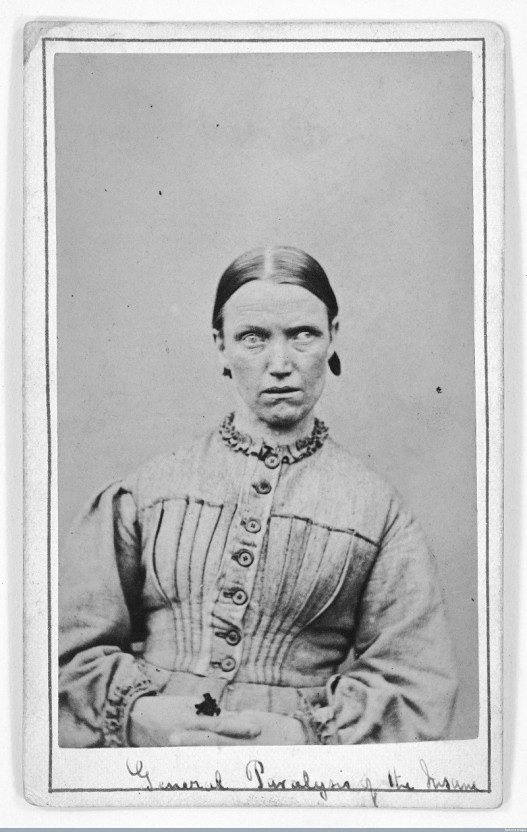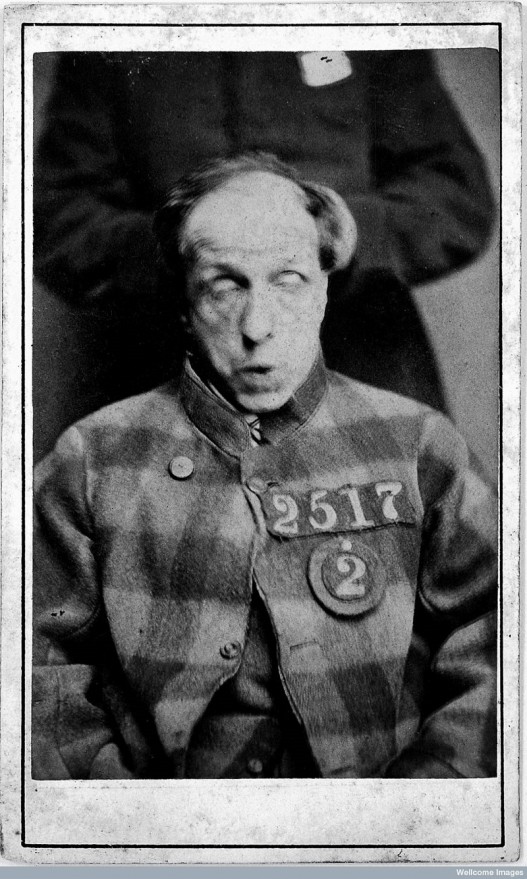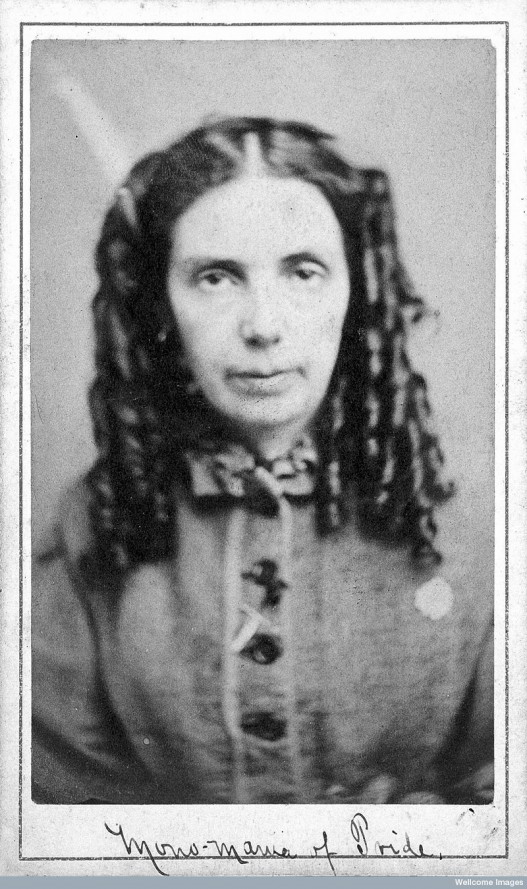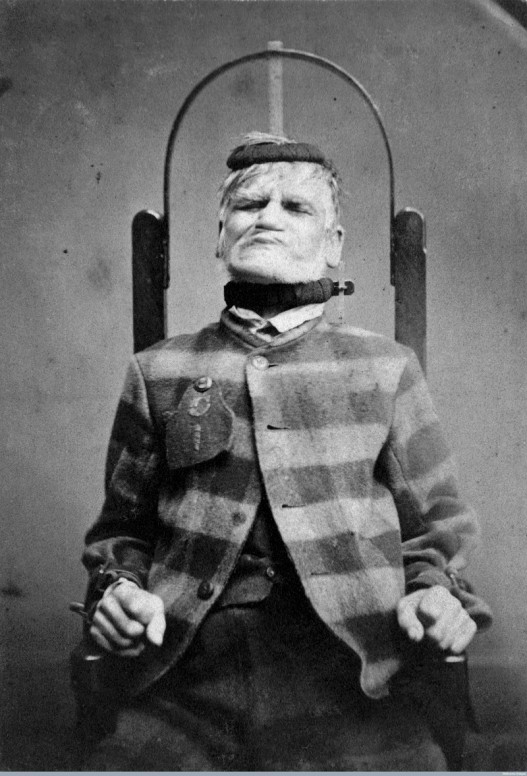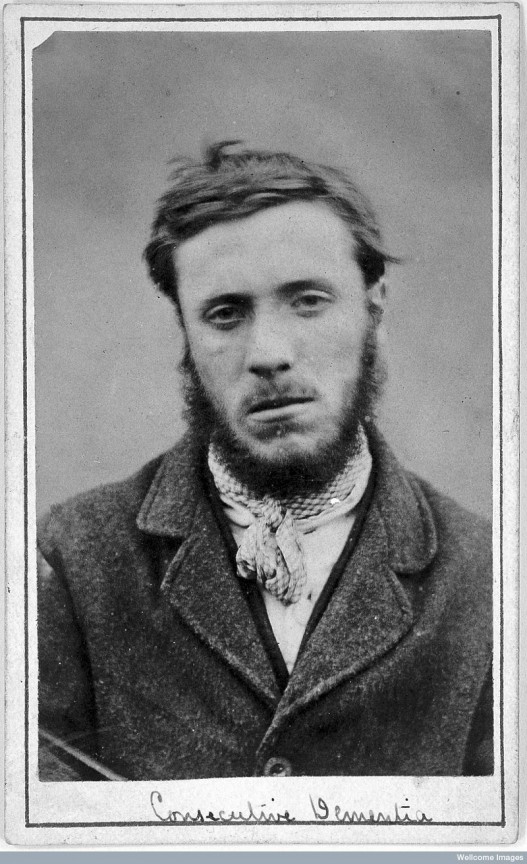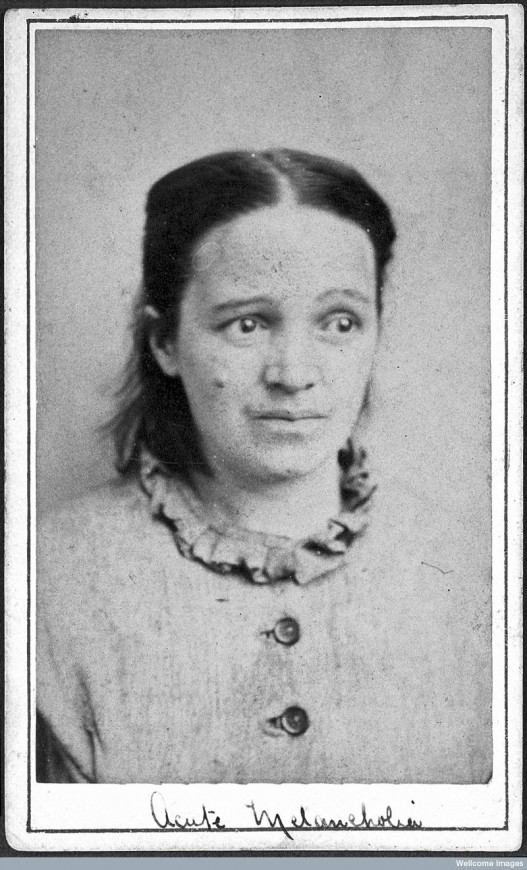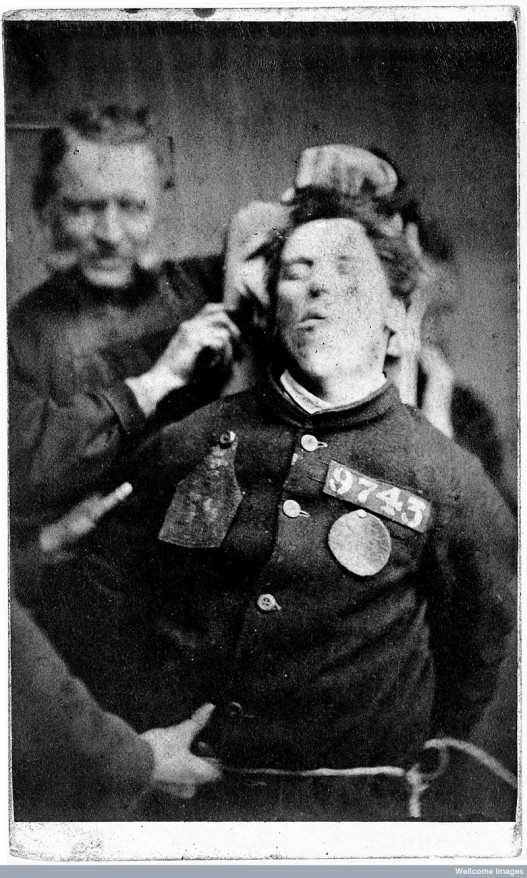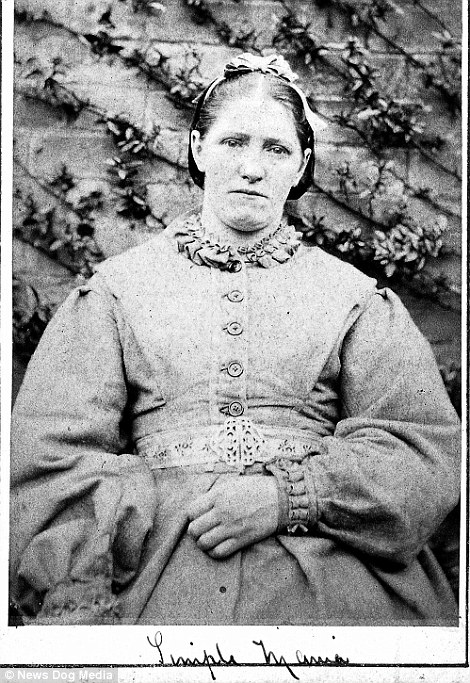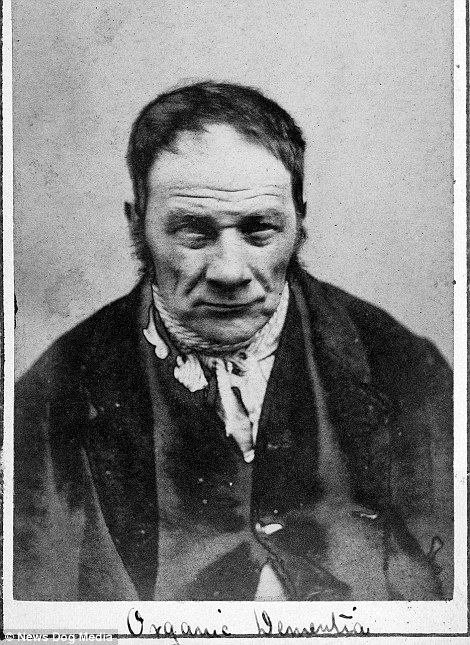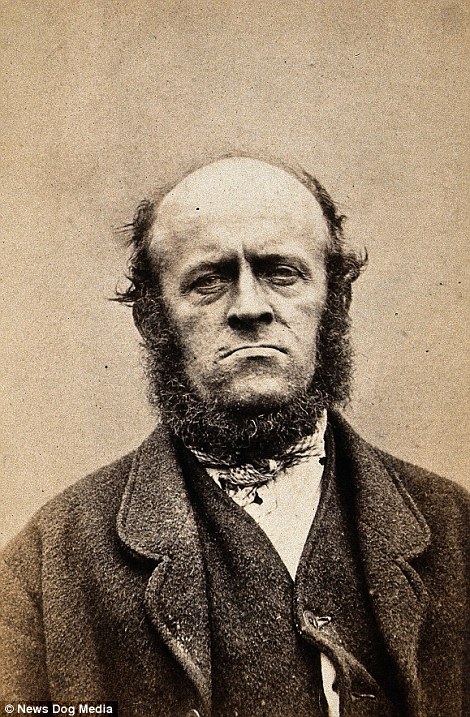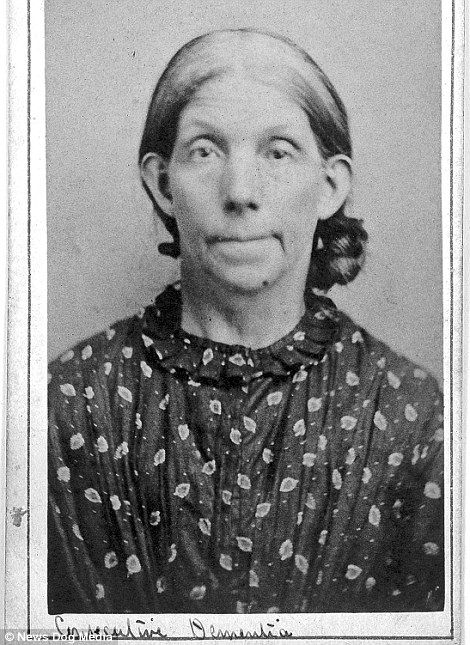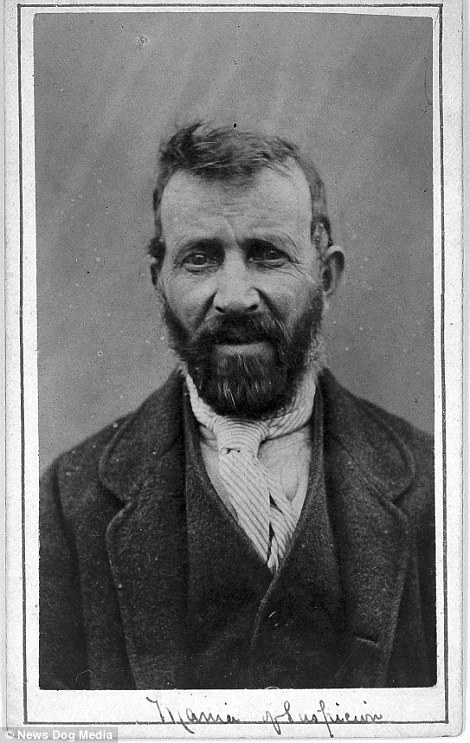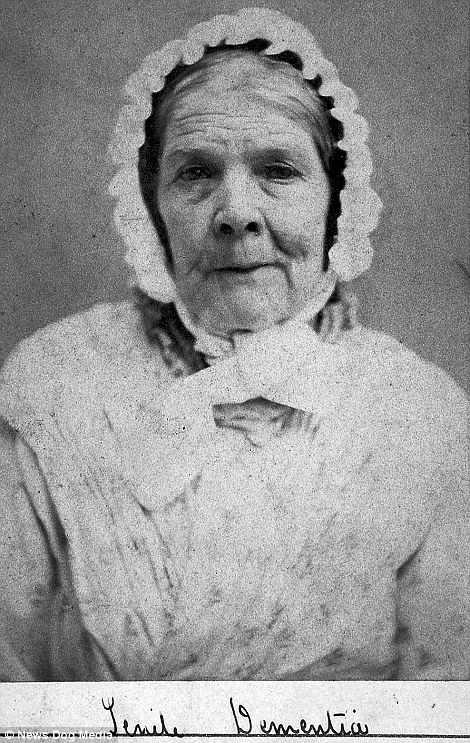Faces from the asylum: Harrowing portraits of patients at Victorian 'lunatic' hospital where they were treated for 'mania, melancholia and general paralysis of the insane'
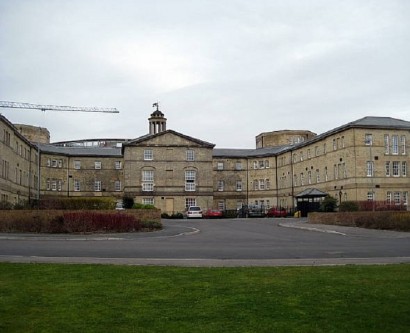 Forced into a head brace, bound and held up by police officers, or sitting down with their eyes rolled back in their heads - these are the harrowing faces of mental illness in the Victorian era. Diagnosed with conditions such as ‘imbecility,’ ‘simple mania,’ and ‘acute melancholia’, all of them were patients at the West Riding Pauper Lunatic Asylum, Yorkshire, in 1869. its first Superintendent Sir William Ellis, and later Superintendent Sir James Crichton-Browne, actually paved the way for ethical treatment of the mentally ill. Crichton Browne is renowned for bringing science to the asylum when he started a laboratory for anatomy, neuropathology and histology. The West Riding Asylum, based near Wakefield, was the sixth institution of its kind in the UK to take those with mental conditions out of the way of regular society to a place of relative protection. To that end, the hospital-come-boarding house was entirely self-sufficient, housing its own bakery, butchery, dairy, shop and laundry. Previously those with mental disorders were exhibited in bedlams, such as the famous one in London, imprisoned in cells, or chained to walls in workhouses. This new, relatively compassionate approach was driven by the asylum's founder, William Tuke, a Quaker who believed in the sanctity of life and of behaving kindly and morally to all of humanity. Mark Davis, author of Voices From The Asylum, a book on the West Riding Pauper Lunatic Asylum, said: 'This new, relatively compassionate approach was driven by William Tuke the founder of the York Retreat which opened in 1796 after Hannah Mills, a Quaker, died at the York asylum in 1790. 'Tuke, a Quaker believed in the sanctity of life and of behaving kindly and morally to all of humanity. At that time Dr Samuel Best who superintended York asylum regarded the mentally ill as less than human, and while in the asylum inmates were denied access to religion and God. 'Quakers, who believe there is a spark of divinity in everyone, were appalled by this. The Retreat is still famous today for having pioneered the humane treatment and moral treatment that became a model for asylums around the world.' Mr Davis added that life inside the asylum was still austere, with residents who were able to work given jobs in the laundry, gardens or working on farms that were sometimes attached to the hospitals. Residents were often forced to pick clothes out a pile placed in the middle of a room, finding sizes that best fit them, while treatments were vary basic. One involved a spinning chair, the theory being that spinning a person around would help to cancel out the spinning in their heads. Sir Crichton-Browne also used the security of the asylum to begin his groundbreaking research into mental illness, investigating whether there was a biological cause behind the conditions he help to diagnose. He helped to take some of these portraits of patients, meticulously labelled with notes on the patient’s appearance and ailments, and three years later collaborated with Charles Darwin on his book ‘The Expression of the Emotions in Man and Animals.’ Crichton-Browne pioneered a medical approach to the treatment of mental disorders at West Riding, banning the use of restraints unless necessary, keeping sedation to a minimum, and allowing patients to indulge in leisure activities and take up jobs as part of their healing process. He also published in-depth journals from his time at West Riding containing observations from himself and his team on mental illness, treatments with various drugs known to affect brain function such as cannabis, nicotine, alcohol, and nitrous oxide. The records kept at West Riding were so detailed and extensive that they are now recognised as being of huge historic and medical importance, and are protected by UNESCO. The collection includes over 5000 photographs of patients from the late 1860s onwards, putting a face to thousands of the patient numbers. One patient was Mary Manning, a Bradford domestic servant, who was admitted in 1880. She claimed to be the 'Queen of heaven, possessed of great wealth and had been crowned'. Others case files show patients were suffering from general health problems such as symptoms which would be recognised today as post-natal depression. Sarah Drabble of Wortley was admitted in 1832, aged 37 with 18 children. She was, rather unsurprisingly, 'feeling in a low despondent state ever since her confinement'. Other women were suffering from social problems, including Mary Ellen Yates, a Leeds housewife, who was admitted in 1887 due to insufficient food and mistreatment by her husband. Children were admitted into the hospital from as early as 1820 and until the opening of the separate Stanley Hall facility in 1901. Examples from the Stanley Hall era include Alfred Todd of Wakefield, West Yorkshire, who was diagnosed of 'imbecility with epilepsy'. The remarks made on his treatment include an answer to questions regarding name and age, which he replied 'broken window' and on asking him names of surrounding objects he replies 'Alfey'. Another mother of an 11-year-old Leeds boy in 1911, said: 'I cannot manage him. He is destructive, breaks and tears everything he can get to lay his hands on. I am obliged to keep knives out of his way and all windows closed. Children in the neighbourhood are afraid of him.' Under the guidance of Crichton-Browne West Riding Asylum went from being a centre to house the poor and mentally ill to taking paying patients who were afraid of being taken elsewhere. But while the project initially set out to improve the treatment of those with disorders, overcrowding and a lack of funding eventually led to horrible conditions developing, with several patients killed during disease breakouts inside the facility. |
